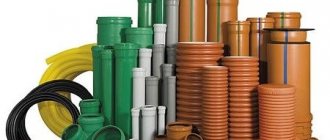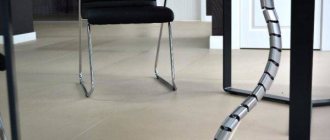A vice is an indispensable partner for any master. Various configurations of this tool allow you to clamp workpieces and parts, significantly reducing labor costs and increasing safety during operation.
In order to learn how to use a vice, you do not need any special skills, but the question remains of how to choose a high-quality and reliable tool among the variety of models on the market.
The device of a bench vice
The appearance of the tool may vary greatly depending on its purpose, but the general structure of the structure is approximately the same:
- Vise base. The base plate, together with the frame, is attached to the surface using clamps or rigidly fixed with bolts.
- Sponges. Part of the structure that provides direct fixation of the part. Usually one is movable, and the second refers to fixed elements. Special pads (cheeks) are attached to the jaws, depending on the work being performed. The cheeks can be smooth to minimize damage to the part or grooved to improve grip.
- Rotary screw. The main working part with which the master interacts. With the help of this element, the workpiece is clamped and released using physical force.
Depending on the scope of application of the vice, one or another part of the structure can be performed differently.
For example, a large vice uses pneumatic or hydraulic force instead of a conventional rotary screw. The location of the sponges can also be very different.
Making a support for the threaded part
Since my workbench has a metal base (only the tabletop is wooden), a support is needed to install the threaded part of the vice. For this:
- First, I welded 2 pieces of metal in the letter G;
- then drilled a large hole in one of them in the center;
- inserted a screw from a vice into it, screwed on a threaded bushing on the reverse side;
- marked the points for the mounting screws;
- unscrewed the connection, drilled holes and screwed the threaded part to the bracket;
- along the edges of the bracket I drilled holes for the guide pins, one edge with a thread, and the second in the form of a platform, which I will later weld to the bracket;
- I cleaned the weld spots with a grinder.
Main types of bench vices
To satisfy all possible consumer demands, a huge number of various modifications of vices have been developed: from small manual ones to giant industrial ones. Vices are divided according to the following characteristics:
- By functional purpose (manual, carpentry, plumbing, machine tools, pipes, special purposes);
- By material (wooden, metal);
- By size (small, medium, large);
- By type of clamping mechanism (mechanical, pneumatic, hydraulic).
Forming a fastening for the edge
To attach such a massive edge to the tabletop, I decided to make a side support, which I would connect using a wedge-shaped tenon. To do this, I make a tenon on the edge and a groove on the support.
Functional purpose of a bench vice
- Hand vice. A small-sized type, reminiscent of ordinary pliers, with the only difference being that there is a clamping mechanism. It is used for fixing small parts, and during processing the vice will need to be held by hand.
- Carpentry. They are actively used in carpentry, as well as for working with soft and delicate materials such as wood and plastic. The special feature is smooth jaws with a large area, which creates good adhesion without excessive deformation of the part. The cheeks are made of wood or rubber.
- Locksmiths. The most popular and widespread type of vice, the cheeks are most often grooved with a small jaw area. Here the compression force is important, and not the possibility of deformation, since most often the work takes place with metal parts. Usually equipped with a swivel mechanism for increased convenience.
- Machine tools. Used on production machines for industrial processing.
- Pipe. This type of vice is designed for clamping pipes; due to this feature, the jaws usually have a semicircular shape for better clamping.
- Special purpose. This includes a huge number of all kinds of modifications for specific tasks of a wide range, ranging from jewelry work to globe vices, where the angle of the product can be changed in different planes.
Precautionary measures
Do not exceed the loads that the device can withstand, otherwise it may quickly fail.
It is necessary to fasten parts exclusively on flat surfaces (this is important for safety reasons and to avoid the appearance of kinks), and also to avoid sudden changes in the volume of parts. The handle of the part should not be lengthened, as this may significantly increase the load on the device.
In some cases, destruction of the housing may occur not only due to increased load, but also due to the poor quality of the metal from which the device was made. In this case, repairs can occur by welding the base and the damaged part at home or in a service center. In case of other malfunctions, it is recommended to contact the manufacturer during the warranty period or replace the parts yourself with similar ones.
Clamping mechanism type
Mechanical. The most popular option is where the compression force is adjusted by the operator's muscle force using special mechanisms such as a screw. They are easy to use and affordable.
In turn, they are divided into the following types:
- Screw. A classic vice, the design uses a through screw, which is turned by a special handle at the end.
- Quick release. There is no longer a screw here, but it is possible to quickly change the position of the jaws, for which a special lever is used.
Eccentric. As the name implies, the main clamping mechanism in this type of vice is an eccentric device with a handle, and the position of the jaw can be freely selected until it is locked.
Pneumatic. These vices are used in production or for processing a large number of products, significantly speeding up work and saving physical effort. In this case, the vice is connected to a pneumatic drive, and due to the energy of compressed air, the part is quickly clamped.
Hydraulic. In many cases, the most efficient ones in terms of speed and clamping force are connected to special hydraulic pumps. These models are best used at industrial facilities when working with a large number of products.
Cast iron or steel?
| Material | Advantages | Flaws |
| Steel | First of all, steel is considered to be quite light in weight and at the same time quite durable material. Tools made from steel are quite easy to transport, again due to the lightness of the steel itself. In addition, steel is considered more adaptable to difficult conditions. And with a steel vice, small parts can be processed more accurately. | Steel is a material that is not very resistant to rust. In addition, this material does not like high humidity. It is also worth noting the high price of steel vices due to the ability to work with small parts, which cast iron vices do not have. |
| Cast iron | Firstly, cast iron has always stood out for its hardness and strength to the limit of the possible. Strong shocks and vibrations - cast iron does not care about all this. In addition, it is easier to process medium and large parts on a cast iron vice. Another advantage of the cast iron alloy is resistance to corrosion, or rather, immunity to it. | Huge dimensions and weight typical of cast iron. In addition, static loads have a bad effect on the cast iron itself. |
Each of the two materials has its own pros and cons
How to choose a bench vise
In order to make the right purchase and not regret the mistake, you should approach this process wisely. Among all the abundance of tools on sale, it is easy for an inexperienced person to get lost, but by following simple rules, this can be avoided:
- First of all, you need to decide on the type of task being performed on the vice. For everyday use, the most common bench vices, which are the most versatile, are suitable. If the work involves small products, perhaps manual ones will be a good choice.
- Depending on the number of products being processed, you should decide on the type of clamping mechanism. For home use, a mechanical one is quite sufficient, but in the case of industrial use (even within a small workshop), it would be quite reasonable to purchase a pneumatic or even hydraulic vice, which will pay for itself very quickly.
- Don't forget about the dimensions of the vice. After all, they are the ones who determine whether it will be possible to work with the required product. For example, for large and bulky workpieces, you should purchase a vice of the appropriate size.
- Quality and price. You should not skimp on a vice, as it is a long-term investment in work efficiency; it is advisable to choose a vice made from the highest quality material, avoiding cheap alloys.
Making a second support
The second vise support will be attached to the opposite side of the workbench under the tabletop. This is why guide pins are needed, thanks to which the vice will always move in the same plane.
- For the threaded ends of the guides, I cut out a support from a metal strip in which I drill holes.
- I insert the guides into them and fasten them with nuts and washers.
- For the second pair of vices, I assemble a similar structure of 2 brackets and 2 guides. But for smooth and uniform movement, I equip them with a homemade unit consisting of 2 bushings and a mounting plate welded to them.
I initially drilled holes in the plate itself so that it could be screwed to the carriage at the back of the vise.
Additional selection tips
When purchasing a vice, it is very important to pay attention to its key characteristics:
- Area and width of the jaws – the size of the area determines the reliability of the fixation. In general, the larger the better, as long as the dimensions of the tool match its tasks.
- Stroke length – this parameter determines the dimensions of the parts being processed. To increase versatility, it is advisable to purchase models with the longest possible stroke length.
However, as this characteristic increases, the weight and dimensions of the vice increase, which should also be taken into account.
Comparison table of characteristics
In the comparison table below you will find the main characteristics of the vise models under consideration. Thanks to it, it will be easier to choose a product in accordance with your wishes and requirements.
| Model name | Weight, kg | Material | Working stroke, mm |
| Glazov plant Metalist TSS-80 80 mm | 1,5 | steel | 80 |
| Sibrteh 18672 65 mm | 1,78 | cast iron, steel | 55 |
| CALIBER TPSN-100 100 mm | 5,5 | steel, cast iron | 100 |
| BISON mini Master (32485) 60 mm | 2,62 | steel | 50 |
| COBALT 910-010 63 mm | 4 | cast iron, steel | 58 |
| Matrix 18506 70 mm | 1,5 | cast iron | 50 |
| Sparta 186275 150 mm | 11,7 | cast iron | 125 |
The best models of bench vices
The market can offer a large assortment of brands and models, which the buyer ultimately chooses based on his preferences and budget.
Options that have earned the most respect from consumers:
- Bench vice - WILTON WI21400, COBALT 246-012, BISON 32712-100;
- Carpenter's vice - WILTON WWV/175 65017EU, ZUBR EXPERT 32731-175;
- Pipe vise - RIDGID 25 40100 (1/8-4) 29674, ZUBR 32611-2 2438.











